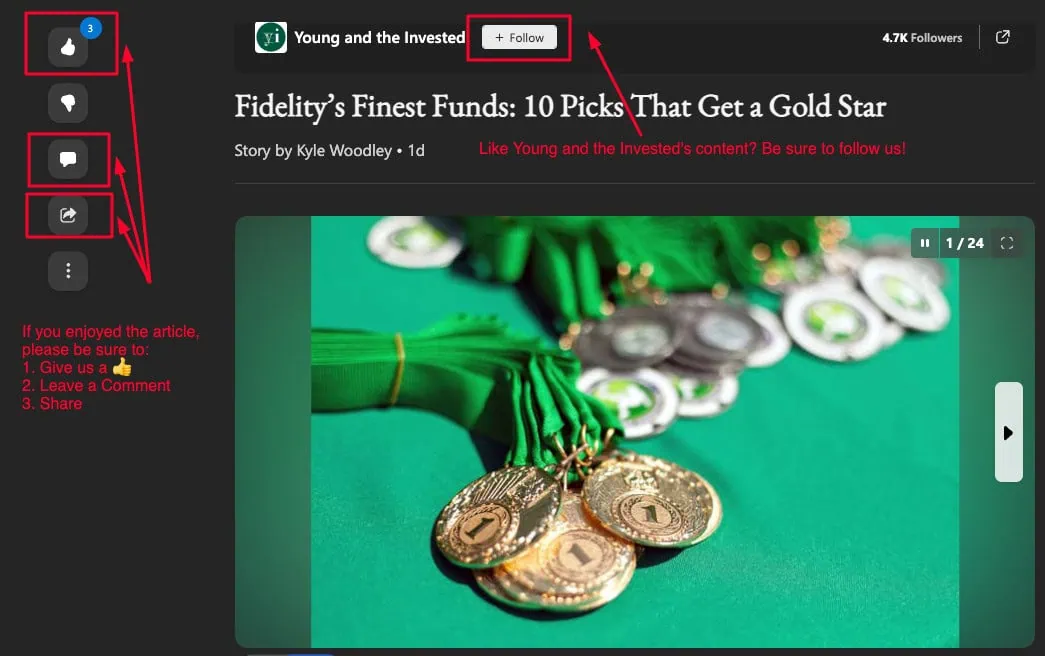“King me!”
OK, it’s incredibly unlikely that anyone has ever uttered these words while punching in an order to buy shares of Coca-Cola (KO) or Procter & Gamble (JNJ). But they could!
That’s because those two stocks are just a couple examples of the investment world’s most esteemed royal family: the Dividend Kings.
Today, I’m going to discuss why dividend growth is so important, what makes Dividend Kings so impressive, and show you the most updated list of these dividend growers.
Table of Contents
Why Dividend Growth Matters

As most of our readers know, dividend stocks are so named because they pay cash distributions (called “dividends”) to their shareholders. They usually do so on a regular basis—quarterly is the norm here in the U.S., but it can be as infrequent as annually and as frequent as monthly.
That gives you two sources of potential return: Capital appreciation (stock go up), and dividend income.
Well, you’ve assuredly heard the business-world phrase, “If you’re not growing, you’re dying.” That’s not a concrete truth as it pertains to dividend stocks, but it’s a good credo to live by.
Said differently: If you’re going to invest in a dividend stock, one of the top qualities to look for is whether that stock routinely increases that dividend, for two reasons:
Reason 1: Dividend Growth Is Often a Sign of Quality

When a company starts paying a regular dividend, they’re making a statement. Put bluntly, they’re saying, “We have the profits to do this, and we expect to continue having the profits to do this.”
That’s a signal of a business’s operational quality. And a company sends a similar signal when it increases its dividend. It means they’re increasingly optimistic that their baseline of profits will continue growing.
And if you’re saying to yourself, “Well, sometimes companies cut or suspend their dividends,” you’re right. Investing is an imperfect science. But for what it’s worth, those are extremely infrequent actions compared to how often companies keep their payouts level or raise them.
Reason 2: Dividend Growth Improves Your ‘Yield on Cost’

Go to your favorite stock-data site and look up a dividend stock like, say Exxon Mobil (XOM). The dividend yield—the percentage of a stock’s price you can expect to receive in dividends in a given year—reflects the yield on today’s prices.
But if you buy a stock at a 1% yield today, and it raises its dividend over time, your “yield on cost” (the yield you’re receiving on the price you paid when you bought the stock) will eventually climb to 2%, 3% … you get the picture.
That’s not just nice because more money = more money. It’s actually really vital, especially when you’re in retirement and living on a fixed income, that the dividend income you depend on is at least growing at the rate of inflation. If your dividend stock keeps its payout level year in and year out, that dividend is actually losing spending power.
Dividend growth that lasts for even a few years is an encouraging feat, but the longer that streak goes, the more impressive it becomes. That’s because dividend hikes don’t happen in a bubble—over a long enough time, they’re happening during wars, pandemics, recessions, depressions, you name it. That not only is a signal that a business’s profits are downright durable—it’s also evidence that the company is committed to enhancing shareholder value.
And that brings us to Dividend Kings.
Related: 11 Best Stock Trading Apps [Free + Paid]
Well, OK: First, the Dividend Aristocrats

I lied. That doesn’t bring us to Dividend Kings. Not directly, anyways.
That actually brings us to Dividend Aristocrats—stocks that have raised their payouts on an annual basis, without interruption, for at least 25 years. It’s a fairly exclusive club of about 70 stocks, most of which (but not all) are well-known blue chips that you could easily pick out of a lineup.
Of course, it’s one thing to get into La Porte d’Argent. It’s another to have a gold membership.
The Dividend Kings are a very exclusive subset of the fairly exclusive Dividend Aristocrats. To pop a crown on its head, a company must deliver at least a half-century’s worth of raises without blinking. For context: Every Dividend King started paying dividends before Steve Wozniak churned out the first Apple computer!
If that made any of you feel old, I’m sorry.
Anyhoo, if 25 years of dividend growth is impressive, then 50 years is doubly so. That means these dividends didn’t just survive, but continued to thrive, during a host of calamities, including at least six recessions, the dot-com bust, the Great Financial Crisis, COVID, and New Coke.
Related: 15 Best Investing Research & Stock Analysis Websites
The Dividend Kings

So, what are these fabled corporations? Here are the 32 Dividend Kings from within the S&P 500 Dividend Aristocrats, which is largely populated with large- and bigger mid-cap stocks, including their annual dividend-growth streak. Stocks are listed by sector.
Consumer Discretionary
— Lowe’s (LOW): 53 years
— Genuine Parts (GPC): 69 years
Consumer Staples
— Walmart (WMT): 52 years
— ADM (ADM): 53 years
— PepsiCo (PEP): 53 years
— Kimberly Clark (KMB): 53 years
— Target (TGT): 54 years
— Sysco (SYY): 55 years
— Altria Group (MO): 56 years
— Hormel Foods (HRL): 59 years
— Colgate-Palmolive (CL): 62 years
— Kenvue (KVUE): 63 years
— Coca-Cola (KO): 63 years
— Procter & Gamble (PG): 69 years
Financials
— S&P Global (SPGI): 53 years
— Cincinnati Financial (CINF): 65 years
Health Care
— Abbott Laboratories (ABT): 53 years
— AbbVie (ABBV): 53 years
— Becton Dickinson (BDX): 53 years
— Johnson & Johnson (JNJ): 63 years
Industrials
— W.W. Grainger (GWW): 54 years
— Stanley Black & Decker (SWK): 57 years
— Illinois Tool Works (ITW): 61 years
— Nordson (NDSN): 61 years
— Emerson Electric (EMR): 68 years
— Parker Hannifin (PH): 69 years
— Dover (DOV): 69 years
Materials
— Nucor (NUE): 52 years
— PPG Industries (PPG): 54 years
Real Estate
— Federal Realty Investment Trust (FRT): 57 years
Technology
— Automatic Data Processing (ADP): 50 years
Utilities
— Consolidated Edison (ED): 51 years
Let’s take a closer look at just a couple so you can really get a feel for what it takes as a business to make it on this list:
Related: How to Invest Money: 5 Steps to Start Investing w/Little Money
Do you want to get serious about saving and planning for retirement? Sign up for Retire With Riley, Young and the Invested’s free retirement planning newsletter.
Johnson & Johnson

–Sector: Health care
–Dividend yield: 3.2%
–Dividend-growth streak: 63 years
There’s an old saying that the best dividend stocks are “widow-and-orphan” investments, because they are the kind of assets you buy and hold forever—or at least until you die and pass them on as inheritance.
Johnson & Johnson (JNJ) is a prime example. It is among the 25 largest companies on Wall Street, with a massive brand and more than 135 years of operations.
It was long a consumer-health giant, but in 2023, JNJ spun off those operations—which included the likes of Tylenol and Band-Aid—into Kenvue (KVUE), which also adopts its dividend-growth streak. But while that modestly reduced the overall footprint of the company, it also sharpened its focus on high-margin drugs (including its Janssen Pharmaceuticals arm) and medical devices to ensure future success. Now, the top and bottom lines are driven by products such as inflammation treatment Stelara, multiple myeloma drug Darzalex, and medical technologies such as electrophysiology, biosurgery, and wound closure products.
JNJ is deeply embedded in the health care system and a top dividend stock that income investors can rely on through any market environment.
From a dividend perspective, the health care giant has raised its payouts for 63 years running, including a 5% upgrade announced in April 2025, to $1.30 per share. But it still has a payout ratio of less than 50%, hinting there’s ample headroom for future increases, too.
Johnson & Johnson is also one of the most credit-worthy companies in the world, ranking as one of just two U.S. companies with a top AAA rating for its corporate debt. Microsoft (MSFT) is the other, if you’re curious. Indeed, following America’s recent credit downgrade by Moody’s, JNJ and MSFT now boast higher debt ratings than the U.S. government across all three of the major debt ratings agencies.
Related: 7 Best Value Stocks for 2025 [Smart Picks to Buy]
Genuine Parts

–Sector: Consumer discretionary
–Dividend yield: 3.2%
–Dividend-growth streak: 69 years
Genuine Parts (GPC) might be considered a consumer discretionary stock, but given that it deals in automotive and industrial parts, much of what it sells is downright essential—and its dividend track record reflects that.
Established in 1928 and headquartered in Atlanta, GPC has carved a niche for itself as a premier distributor of automotive replacement parts, industrial parts, and business products. Its automotive segment (roughly two-thirds of revenues) predominantly come from large auto-care chains and local repair shops, though a little less than a quarter come from individual consumers. And its industrial segment (roughly one-third of revenues) sells directly to companies with large fleets.
Key to the company’s enduring success has been its extensive network of distribution centers and stores, including the well-known NAPA Auto Parts brand. This long reach has ensured a steady demand for its products, which is helpful in the often cyclical automotive and industrial sectors.
Genuine Parts Company’s investor appeal is significantly bolstered by its impressive record of dividend payments. The company has paid out dividends without interruption for 76 years, and it has increased those distributions annually for 69 consecutive years to earn its Dividend King membership card. No. 69 was announced in February 2025, when GPC upped its dividend by 3% to $1.03 per share quarterly.
Want to talk more about your financial goals or concerns? Our services include comprehensive financial planning, investment management, estate planning, taxes, and more! Schedule a call with Riley to discuss what you need, and what we can do for you.
Related: 13 Best Long-Term Stocks to Buy and Hold Forever

As even novice investors probably know, funds—whether they’re mutual funds or exchange-traded funds (ETFs)—are the simplest and easiest ways to invest in the stock market. But the best long-term stocks also offer many investors a way to stay “invested” intellectually—by following companies they believe in. They also provide investors with the potential for outperformance.
So if you’re looking for a starting point for your own portfolio, look no further. Check out our list of the best long-term stocks for buy-and-hold investors.
Related: 10 Best Monthly Dividend Stocks for Frequent, Regular Income

The vast majority of American dividend stocks pay regular, reliable payouts—and they do so at a more frequent clip (quarterly) than dividend stocks in most other countries (typically every six months or year).
Still, if you’ve ever thought to yourself, “it’d sure be nice to collect these dividends more often,” you don’t have to look far. While they’re not terribly common, American exchanges boast dozens of monthly dividend stocks.
Please Don’t Forget to Like, Follow and Comment

Did you find this article helpful? We’d love to hear your thoughts! Leave a comment with the box on the left-hand side of the screen and share your thoughts.
Also, do you want to stay up-to-date on our latest content?
1. Follow us by clicking the [+ Follow] button above,
2. Subscribe to Retire With Riley, our free weekly retirement planning newsletter, and
3. Give the article a Thumbs Up on the top-left side of the screen.
4. And lastly, if you think this information would benefit your friends and family, don’t hesitate to share it with them!





